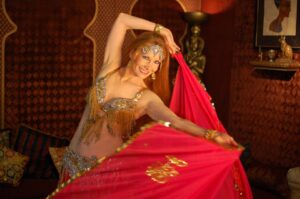Welcome to the Shimmies-r-us website, and thank you for visiting.
 If you desire to begin attending belly dance classes and are searching for a belly dance instructor, you’ve come to the right place… or if you are a past student of mine and are hoping to return to classes, or just dropping by to see what’s going on, you will want to read the following message:
If you desire to begin attending belly dance classes and are searching for a belly dance instructor, you’ve come to the right place… or if you are a past student of mine and are hoping to return to classes, or just dropping by to see what’s going on, you will want to read the following message:
As most of you are aware, I have contemplated retiring from teaching for the past couple of years, but could never quite bring myself to actually do so. However, this past year (2023) brought so many changes in my life, it became increasingly apparent that an extended hiatus was inevitable. It was my sincere hope that I would be able to offer some classes on a smaller scale in my basement studio starting last Fall, but planning my wedding for September obviously took precedence. Although I am still not completely settled nor ready to commit to teaching on a regular basis, I have agreed to visit occasionally during some of Jess’s classes in the next several months.
I do apologize for my absence and what may have seemed a disappearance, but do not fear…I’m still alive
and haven’t quite relinquished my “throne” yet… (ha!)
Meanwhile, I hope you will check out both instructors’ pages (Jess and Sue) and consider attending any of
their class offerings. Both ladies have studied with me for several years as well as having performed with
my troupe, Tollabet el Gypsy.
Shimmy on….
– The “Queen” (Gypsy)
Click here to learn more about belly dancing
Click here to see the class calendar
Click here to register for class
